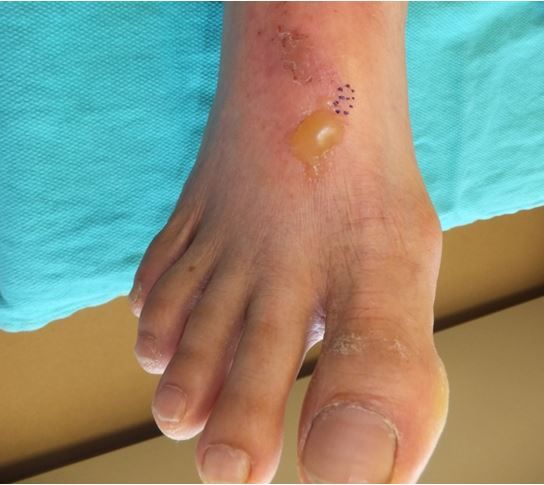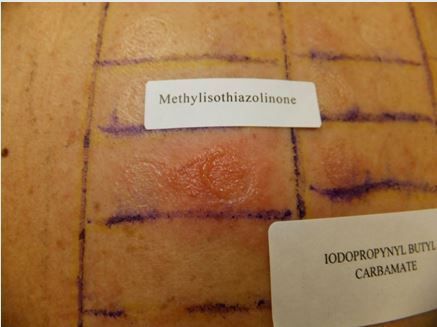- Clinical Technology
- Adult Immunization
- Hepatology
- Pediatric Immunization
- Screening
- Psychiatry
- Allergy
- Women's Health
- Cardiology
- Pediatrics
- Dermatology
- Endocrinology
- Pain Management
- Gastroenterology
- Infectious Disease
- Obesity Medicine
- Rheumatology
- Nephrology
- Neurology
- Pulmonology
Allergic Contact Dermatitis
Allergic contact dermatitis is common, can be debilitating for patients, and may mimic other dermatoses.
Figure 1. Erythematous, edematous plaques surmounted with tense, fluid filled vesicles and bullae of dorsal foot.

Figure 2. Bullous reaction with spread to the preservative methylisothiazolinone.

A 63-year-old man developed an intensely itchy rash diffusely over his body. He denied any new medications, change in topical products, and occupational exposure to any chemicals before the onset of the rash. Physical examination revealed edematous, red plaques on the back, abdomen, thighs, and legs along with many fluid-filled vesicles and bullae with surrounding erythema on both feet (Figure 1).
(Please click on Figures to enlarge.)
The differential diagnosis included bullous pemphigoid, allergic contact dermatitis, urticaria, bullous Sweet syndrome, and bullous impetigo.
Biopsy revealed parakeratosis; a spongiotic epidermis with lymphocyte, eosinophil, and neutrophil exocytosis; and profound papillary dermal edema with subepidermal bulla and a superficial to mid-dermal infiltrate of lymphocytes and eosinophils. Direct immunofluorescence examination was nonspecific, with dermal and epidermal deposition of IgA, IgM, and fibrinogen. Bacterial culture was negative.
Given the morphology and distribution of the rash and the biopsy results, the best diagnosis was acute contact dermatitis with bulla formation. The patient was treated with desoximetasone 0.25% ointment and later underwent patch testing, which revealed profound allergy to several preservatives and fragrances. (Seen in Figure 2 is a bullous reaction with spread to the non–formaldehyde-releasing preservative methylisothiazolinone, the American Contact Dermatitis Society’s 2013 Allergen of the Year. Also seen is a less vigorous response to the preservative iodopropynyl butyl carbamate.)
Allergic contact dermatitis is a common dermatosis that can be debilitating for patients. The most common allergens responsible for allergic contact dermatitis are nickel; fragrances; topical antibiotics; and preservatives, including both formaldehyde- and non–formaldehyde-releasing preservatives.
Note: Acute allergic contact dermatitis may produce urticaria and bullae, mimicking other dermatoses. Biopsy and culture should be performed to exclude bullous pemphigoid and impetigo.
